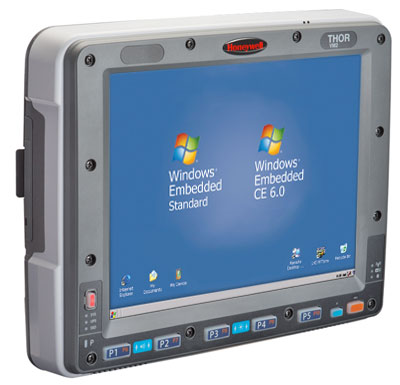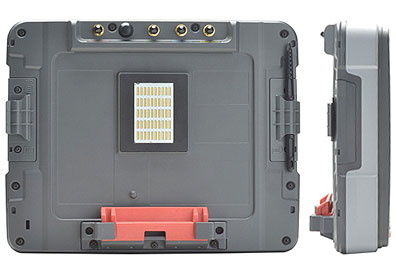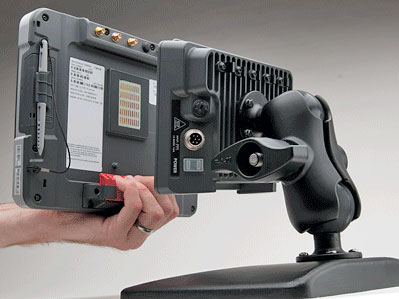The Thor VM2, introduced by Honeywell in January 2013, is a compact vehicle-mount computer with a 9.7-inch XGA touch display and a number of multi-function keys. Depending on the intended application, the Intel Atom-powered Thor can be operated with either Windows Embedded Standard 2009 or with Windows CE 6.0. The VM2, which Honeywell calls a "tenth generation vehicle-mount computer," is a close cousin to the company's Thor VM1, but without an integrated keyboard and with a larger display.

The Thor VM2 has a footprint of 10.6 x 8.4 inches, is just over two inches thick, and weighs about five pounds. The VM2's resistive touch display measures 9.8 inches diagonally and offers XGA 1024 x 768 pixel resolution, the same size and resolution as the initial Apple iPad. A unique feature here is that the VM2's most damage-prone components, the keyboard and touchscreen, are user-replaceable on the go.
The VM2 is powered by a 1.6GHz Intel Atom Z530 processor. This processor was designed specifically for industrial and embedded applications (as compared to the Atom N270 and N450 that were used in millions of netbooks), and is still used in a large number of industrial and vertical market tablets and other mobile computers.
The ability to run certain applications often determines the purchase decision of vehicle-mount computers. Since some of that software was written for Windows CE and some for standard Windows, LXE designed the Thor to be able to run both Windows CE 6.0 or Windows Embedded Standard 2009. Depending on the choice of operating system, Thor devices may be equipped with 1GB of RAM and 1GB of Flash (for Windows CE), or with 2GB of DDR2 RAM and 4 or 8GB of Flash (for Windows Embedded).

As far as ruggedness goes, the Thor VM2 was designed to handle the typical conditions encountered in vehicle use. The device is sealed to IP66 specifications, which means it is totally protected against dust and it can also handle strong jets of water from all directions. The Thor is also vibration-proof and can operate in a very wide temperature range of -22 to 122 degrees Fahrenheit. For use in very low temperatures, customers can even order a screen defroster. As the picture above shows, the Thor can be mounted virtually anywhere and in numerous ways.
The designers of the Thor line of vehicle-mount panel computers know that some applications only need touch whereas others need, or benefit from, a full keyboard. The VM2 is for the former, whereas the mechanically almost identical Thor VM1 covers the latter. Both the Thor VM2 and VM1 are compatible with the line's quick-mount smart dock.

The Thor VM2 generally uses vehicle power (10 to 60VDC), but Honeywell also offers external converters for AC or extended VDC (60 to 150V). And since the VM2 is designed to work with a quick-mount smart dock, it also has an internal bridge battery that provides power for up to 30 minutes even in very cold weather. That way it can be moved to a different vehicle or location without shut-down, or even operated while walking around for brief periods of time.
Wireless communication capabilities are becoming ever more important in vehicle-mounted computers, and so the Thor includes not only the usual WiFi and Bluetooth, but customers can also order an internal Gobi 2000 WWAN module for technology and carrier-independent wireless data (but not voice). And the Gobi module also includes assisted GPS.
"Thor" being the name of a hammer-wielding nordic god, the Honeywell Thor VM2 probably benefits from LXE's Akerstroms Trux connection (LXE bought Akerstroms Trux in 2008, Honeywell bought LXE in 2011) which was already for the company's Förj and Kärv vehicle-mount tablets. Good pedigree indeed.
Also see Honeywell's press release announcing the Thor VM2.









